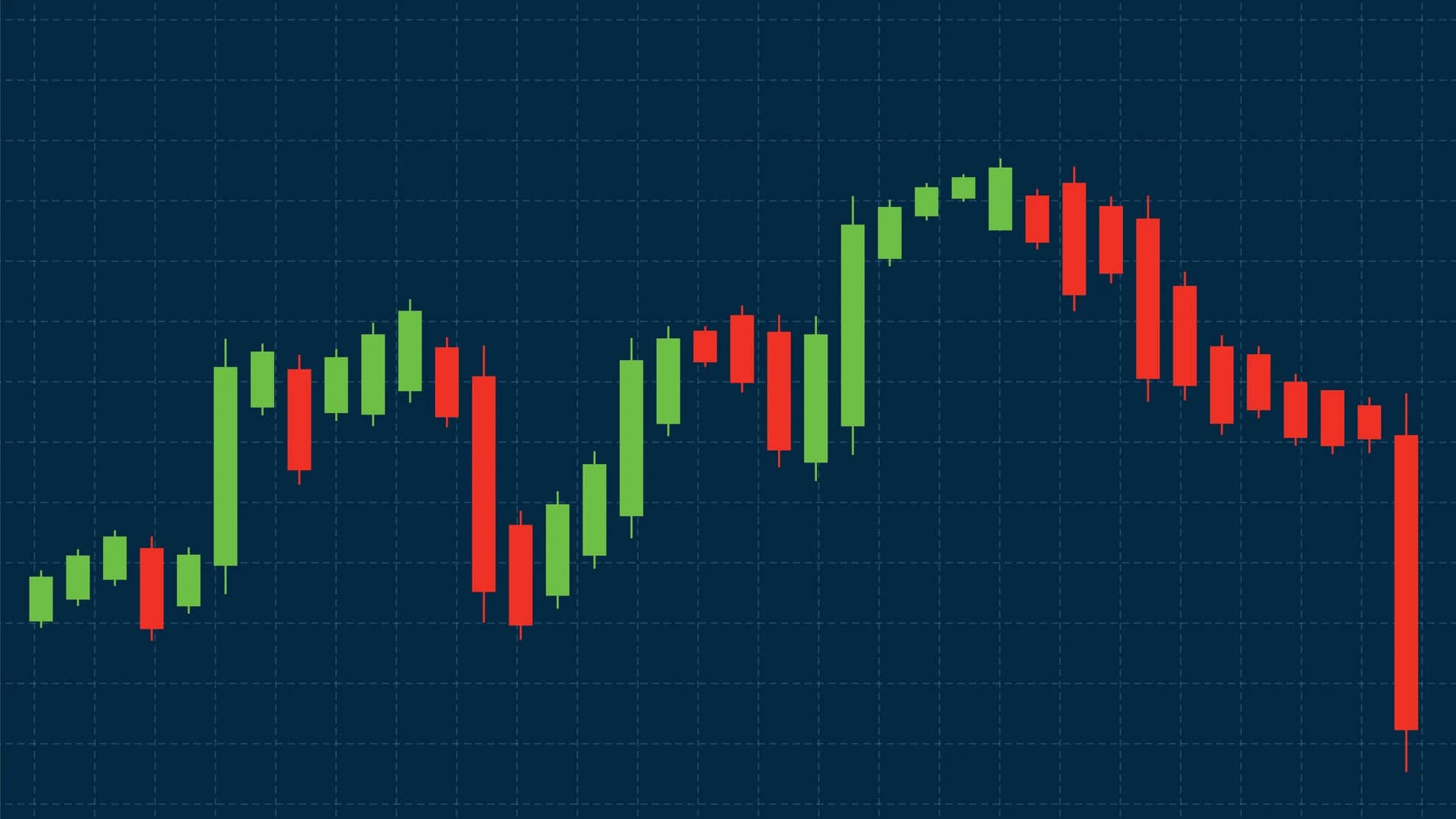The Complete Guide to the Trading Zones With Extension Indicator for NinjaTrader 8
This leading NinjaTrader 8 Trading Zones with Extension Indicator plots daily initial balance and forecasting levels where the market will react.
Trading blind is expensive.
You open your charts each morning. The market starts moving. Where will it reverse? Where will it break out? You're guessing. Everyone else is guessing too.
Most traders lose money because they don't know where institutional players will act. They chase price movements after they happen. They enter at the worst possible levels. They watch profits evaporate.
The Trading Zones With Extension Indicator for NinjaTrader 8 changes everything.
It's a leading indicator from Rize Capital that plots your entire day's roadmap before the market even gets started. Initial balance zones. Extension lines. High-probability trading zones. All calculated and displayed automatically at the start of each session.
This isn't reactive analysis. It's predictive. You know where the market will likely react before it gets there. You position yourself ahead of the crowd. You trade with institutional-level information.
That's the difference between professional trading and expensive guesswork.
What This Indicator Does
The Initial Balance Framework
The Trading Zones With Extension Indicator builds everything around the initial balance concept—a professional trading methodology used by floor traders and institutions for decades.
The initial balance represents the price range established during the first period of trading. This range reveals where early market participants—the informed traders—believe fair value exists. It's not arbitrary. It's where smart money positions itself.
The indicator plots this zone automatically. You set the start and end times. The indicator does the rest. No manual drawing. No subjective interpretation. Just clean, objective levels that update in real-time as the initial balance develops.
Extension Lines: Where Reactions Happen
Beyond the initial balance, the indicator plots extension lines on both sides—green lines above, red lines below. These aren't random levels. They're calculated zones where institutional order flow typically concentrates.
Price reacts at these lines. Not sometimes. Consistently. Because institutions use similar frameworks for their order placement and risk management. When price approaches these extensions, you're seeing areas where large players have pre-positioned orders.
You watch price approach a green extension line. You prepare. You know what's likely to happen. You're not guessing anymore.
Trading Zones: High-Probability Opportunities
After the initial balance period completes, the indicator plots trading zones on both sides of the initial balance range. These zones represent areas of maximum opportunity—where the probability of significant price reactions increases dramatically.
When price enters these zones, you're looking at setups that professional traders wait for. Not every trade. Not random entries. High-probability opportunities where risk-reward ratios favour aggressive position-taking.
The indicator marks these zones clearly. You can't miss them. You plan your trades around them. You wait for price to come to you instead of chasing it around the chart.
Live Range Display
The indicator displays the initial balance range in real-time. You see exactly how wide or narrow the opening range is. This information tells you whether you're facing a volatile or quiet session. It informs your position sizing and risk management decisions.
Wide initial balance? Expect larger moves. Adjust accordingly. Narrow initial balance? Prepare for potential breakout or consolidation. The range itself provides valuable context for how the entire session might unfold.
Why This Approach Works
Institutional Trading Methodology
Floor traders developed initial balance concepts decades ago. They needed objective frameworks for managing risk and identifying opportunities in fast-moving markets. What they created works. It's still used today by professional trading operations worldwide.
The Trading Zones With Extension Indicator automates this professional methodology. You get institutional-level analysis without years of learning curve or expensive trading education. The indicator does the calculations. You focus on execution.
Leading vs Lagging Analysis
Most indicators react to price movements after they happen. They're lagging. By the time they generate signals, the best entry points have passed.
This indicator is different. It's leading. It plots levels before price reaches them. You position yourself ahead of movements instead of reacting to them. This timing advantage compounds over hundreds of trades into significant performance improvement.
Objective Decision Framework
Emotions destroy trading accounts. Fear keeps you out of good trades. Greed pushes you into bad ones. Hope makes you hold losers too long.
The indicator eliminates emotional decision-making. The levels are predetermined. The zones are calculated. You're following a systematic approach based on proven institutional concepts. Your psychology improves because your framework is solid.
Technical Setup and Requirements
Platform Compatibility
The Trading Zones With Extension Indicator runs on NinjaTrader 8. It integrates seamlessly with the platform's charting and analysis tools. Installation is straightforward. Setup takes minutes.
Universal Market Application
The indicator works on any instrument. Forex. Futures. Stocks. Indices. Cryptocurrencies. The initial balance concept applies universally because it's based on fundamental market structure principles that exist across all traded markets.
You can apply the same analytical framework whether you're trading ES futures, EUR/USD, or individual equities. Consistency across markets improves your overall trading proficiency.
Time Frame Flexibility
While the indicator calculates based on daily initial balance periods, it displays appropriately across different intraday timeframes. Whether you're watching 1-minute, 5-minute, or 15-minute charts, the zones and levels remain clearly visible and actionable.
Configuration and Customisation
Setting Initial Balance Times
You define when the initial balance period begins and ends. This flexibility accommodates different markets and trading sessions. Some traders use the first 30 minutes. Others prefer the first hour. You choose based on your market's characteristics and your trading style.
The settings are accessible through a clear interface marked in the indicator parameters. Change the times as needed for different markets or trading approaches. The indicator adapts to your specifications.
Daily Repeat Functionality
The indicator offers a "Repeats Daily" option that plots zones and levels for every day's data on your chart. This setting provides historical context—you see how price has interacted with previous days' zones and extension lines.
Historical perspective matters. It shows you whether current levels represent established patterns or unusual conditions. It helps you gauge the reliability of today's zones based on how price has behaved at similar levels previously.
Selective Day Display
Alternatively, you can choose specific days to display. Maybe you only want to see the current session. Maybe you want the last three days for context. Maybe you're analysing specific historical sessions.
The selective display options give you control over chart clarity. You maintain the information you need without cluttering your analysis with excessive historical data.
Visual Customisation
You can customise colours, opacity, and visual appearance of all plotted elements. Match your chart's colour scheme. Improve visibility under different lighting conditions. Create visual cues that align with your trading process.
Green extension lines. Red extension lines. Trading zone colours. Initial balance range appearance. Everything is adjustable. Your chart becomes a personalised trading tool optimised for your specific needs.
Critical Default Settings
Certain parameters—marked clearly in the indicator settings—should not be changed. These default values control the indicator's calculations and level identification algorithms. They've been optimised through extensive testing and represent the best balance between accuracy and reliability.
Changing these core parameters can compromise the indicator's effectiveness. The separation between visual customisation and analytical parameters ensures personalisation doesn't sacrifice performance.
Practical Trading Applications
Pre-Market Preparation
The indicator's greatest strength is enabling thorough pre-market preparation. Before the session opens, you know where the initial balance will be calculated. As the opening period unfolds, you watch the range develop. You see the extension lines. You note the trading zones.
You're prepared before most traders even understand what's happening. This preparation translates directly into better decision-making and improved timing throughout the session.
Reaction Point Trading
When price approaches extension lines, you're watching for reactions. These aren't guaranteed reversals. They're high-probability inflection points where trading activity typically increases and directional decisions occur.
You prepare limit orders. You watch for confirmation. You position yourself to capitalise on the reaction whether it's a reversal or a breakout. The extension lines give you specific levels to focus on instead of watching price aimlessly.
Breakout Strategies
When price moves into the trading zones beyond the extension lines, you're potentially witnessing breakout situations. These zones represent areas where momentum traders and trend followers typically engage aggressively.
You can trade with the breakout or wait for pullbacks to the extension lines. Either approach works. The indicator gives you the framework. You choose the execution method that fits your risk tolerance and trading style.
Range-Bound Trading
If price remains within the initial balance range for extended periods, you're facing range-bound conditions. The indicator helps you identify these environments clearly. You adjust your strategy accordingly—selling resistance, buying support, or staying flat until direction emerges.
Understanding market context separates profitable traders from those who force trades in every condition. The indicator provides that context automatically.
Risk Management Integration
The zones and extension lines inform position sizing and stop-loss placement. Distance from current price to the next significant level helps determine appropriate risk per trade. Wider distances suggest larger stops and smaller positions. Tighter spacing allows more aggressive sizing.
Professional risk management starts with objective reference points. The indicator provides those reference points consistently across all trading sessions.
Advanced Applications
Multi-Day Pattern Recognition
When you display multiple days' zones and levels, patterns emerge. You see where price consistently reacts. You identify levels that generate reliable opportunities repeatedly. This pattern recognition improves your ability to assess trade quality and probability.
Not all zones are equal. Historical context reveals which setups deserve aggressive position-taking and which warrant caution or avoidance.
Session Flow Analysis
The relationship between initial balance width and subsequent price action provides insights into session character. Narrow initial balances often precede volatile breakouts. Wide initial balances frequently lead to range-bound sessions or reversals.
Understanding these relationships helps you anticipate how the session might unfold based on opening price action. Better anticipation leads to better positioning and improved overall performance.
Integration With Other Methodologies
The Trading Zones With Extension Indicator complements other technical analysis approaches. Use it alongside volume analysis. Combine it with chart patterns. Integrate it with momentum indicators.
The initial balance framework provides structural context that enhances almost any trading methodology. It's not either-or. It's additive. Your existing strategies become more effective when applied within the initial balance framework.
Version History and Updates
Version 5.2.0.1 Features
The current version includes universal instrument compatibility, ensuring optimal performance across all markets and asset classes. The indicator folder location has been updated for improved organisation and easier maintenance.
Auto-update functionality ensures you always have access to the latest improvements and optimisations. Announcement systems keep you informed of new features and enhancements as they become available.
Ongoing Development
Rize Capital continues refining and improving the indicator based on user feedback and evolving market conditions. The commitment to ongoing development ensures the tool remains relevant and effective as markets and trading technologies evolve.
Best Practices for Success
Respect the Default Settings
The indicator's core calculation parameters have been optimised professionally. Don't change them unless you have specific expertise and compelling reasons. Visual customisation is fine. Analytical parameter modification is not recommended.
Combine With Discipline
The indicator provides excellent information. But information alone doesn't generate profits. You need discipline. You need risk management. You need emotional control.
Use the indicator within a comprehensive trading plan. Define your entry criteria. Set your risk parameters. Execute consistently. The indicator improves your edge. Discipline converts that edge into profits.
Focus on High-Probability Setups
Not every approach to an extension line deserves a trade. Not every entry into a trading zone represents opportunity. Quality matters more than quantity.
Wait for the best setups. The ones where multiple factors align. The ones where risk-reward ratios strongly favour position-taking. The indicator helps you identify these opportunities. Your judgment determines which ones to trade.
Maintain Realistic Expectations
The indicator doesn't guarantee winning trades. Markets are uncertain. Losses happen. Even the best setups sometimes fail.
What the indicator does provide is a framework that, over many trades, tilts probability in your favour. That statistical edge compounds over time into meaningful performance improvement. But individual trades remain uncertain.
Keep Learning
The initial balance concept has depth. The more you understand about why it works and how institutional traders use it, the more effectively you'll apply the indicator's information.
Study price action at the zones and extensions. Notice what works and what doesn't. Develop pattern recognition skills. The indicator provides the foundation. Your developing expertise maximises its value.
Common Mistakes to Avoid
Overtrading the Levels
Just because an extension line exists doesn't mean you should trade every touch. Context matters. Market conditions matter. Quality matters.
Be selective. Wait for confirmation. Look for additional supporting factors before committing capital.
Ignoring Market Context
The indicator works in most conditions. But some environments are more favourable than others. High volatility periods might see price blast through zones with minimal reaction. Low volatility might trap you in endless ranging behaviour.
Adjust your approach based on current market character. The indicator gives you levels. You provide the contextual judgment.
Abandoning Risk Management
Clear levels sometimes create false confidence. You think you know exactly where to place stops. You think the trade is certain. You risk too much.
Maintain consistent risk management regardless of setup quality. The best-looking trades sometimes fail. Protect your capital always.
Changing Settings Randomly
Customisation is available for good reasons. But random changes to core parameters will degrade performance. If you're going to modify settings, test thoroughly. Document results. Approach changes systematically.
Most traders perform best with default settings. Resist the temptation to tinker without compelling reasons.
Conclusion: Trading With Professional Structure
The Trading Zones With Extension Indicator brings institutional-level market analysis to retail traders. You get the same structural framework that professional operations use for their decision-making and risk management.
But the indicator is a tool, not magic. Success requires understanding the concepts it represents. It requires discipline in execution. It requires realistic expectations and proper risk management.
Use it within a comprehensive trading plan. Combine it with sound judgment. Apply it consistently across many trades. The statistical edge it provides compounds over time into meaningful performance improvement.
Stop guessing where the market will react. Stop chasing price after it moves. Stop trading based on hope and emotion.
Start trading with structure. With preparation. With institutional-level information plotted on your charts before the market even begins moving.
That's what the Trading Zones With Extension Indicator delivers. That's the difference between professional trading and expensive guesswork.

Shariful Hoque
SEO Content Writer
Shariful Hoque is an experienced content writer with a knack for creating SEO-friendly blogs, marketing copies and scripts.
Related Posts

Best Volume Indicators that Every Trader Should Know
Unlock the secret behind market moves – explore the best volume indicators every trader must know for smarter, stronger trades

Best Free NinjaTrader Indicators That You Should Always Keep
Discover the best free NinjaTrader indicators that can enhance your trading strategies. Improve and automate your trades with these essential tools.

What Are NinjaScript Strategies in NinjaTrader 8?
Learn about NinjaScript strategies in NinjaTrader 8, how they work, and how to automate your trading with custom conditions and indicators.


